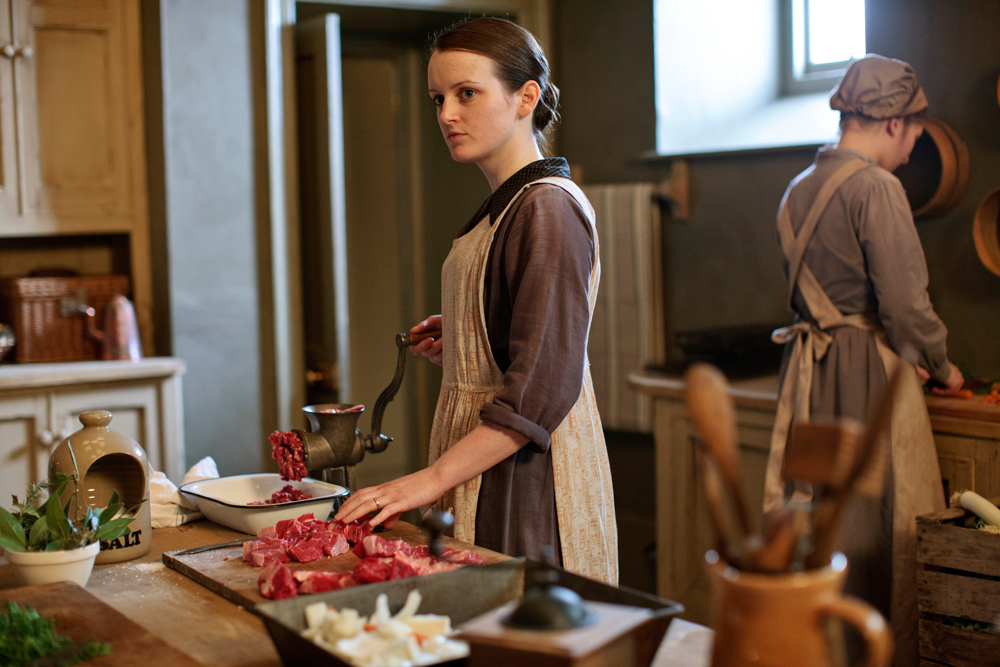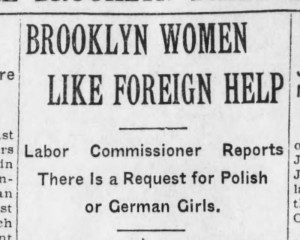BROOKLYN WOMEN LIKE FOREIGN HELP (1915)

Brownstone Detectives investigates the history of our clients’ homes.
The story you are about to read was composed from research conducted in the course of one of those investigations.
Do you know the history of YOUR house?
********************************************************************************************************************************

American housewives have always been fond of foreign servants.
Brooklyn women were – 100 years ago – more than typical of that trend.
Very much like today’s dependence on foreign help (primarily labor from those of Mexican extraction), this trend was likely due – back in Victorian and Edwardian Brooklyn – to an eagerness on the behalf of these women, to have the work in a land where they had few options, as well as to an eagerness, on the behalf of the homeowners, to having cheaper, more dependable labor.

Such “help” in the house, according to the New York Times, “freed women from many chores and enabled them to use their time to enhance their moral character and educate themselves – to paint, do needlework, write, engage in physical activity and travel.”
The demand, though, for “foreign-speaking girls,” in particular, was “strong,” a 1915 report from a Brooklyn labor office noted. And it was so “especially in Brooklyn,” they noted, where many second generation immigrants lived and thus presented an atmosphere where “a very large number of positions are now waiting for girls who are Polish, German or Scandianvian.”

A look at the census of a typical Brooklyn block of the period would produce as many as 10-20 live-in servants, most of which usually immigrated from those countries which produced the lineage of the families themselves.
The number of “kitchen girls” and maids, though, depended upon the size and financial status of the household, of course. In Brooklyn, though, for those families that could afford help, it was typical for many families to have one servant, and sometimes two.
For a period of time in the late 1800s, the “Irish kitchen girl,” to use an illustration, was very popular. This was probably driven by the number of Irish immigrant girls seeking employment at the time at the many borough employment bureaus.

A review of the want ads of the time would reveal the specificity with which many families delineated the type and background of the help they desired.
By the 1920s, those who would fill servant positions enjoyed many more viable options than those available to previous generations. Thus, the title of “servant” would be discovered on fewer and fewer census records.
Chief amongst the primary catalysts for this trend would be the economy, but coming in a close second would be the increasing number of inventions designed to contribute to making the housewife’s job easier – the vacuum and the washing machine, among them.
———————————————————————————————————————–
 Brownstone Detectives is an historic property research agency. Our mission is to document and save the histories of our clients’ homes. From our research, we produce our celebrated House History Books and House History Reports. Contact us today to begin discovering the history of your home.
Brownstone Detectives is an historic property research agency. Our mission is to document and save the histories of our clients’ homes. From our research, we produce our celebrated House History Books and House History Reports. Contact us today to begin discovering the history of your home.